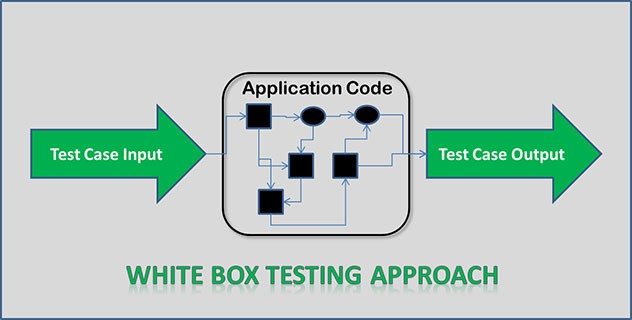In software testing many different types of testing and techniques are conducted and among them, one of the famous testing is known as WBT.
[leaderad]
The word WBT stands for White Box Testing and is called by various different other names such as Open Box Testing, Glass Box Testing, Clear Box Testing, Transparent Box Testing and Structural Testing. This type of testing is a first step of testing performed in software testing.
Let’s check in detail for what is WBT? When to perform it? What are its pros and cons of this testing?

What is meant by White Box Testing (WBT)?
White Box Testing or Structural Testing is a detail investigation of internal working of a software or structure of a code. In this, we perform detail testing of a code and it’s working by analyzing whole working structure and testing it by putting test inputs to attain valid outputs.
This type of testing is done and performed from developer’s end. The main responsive concern for White Box Testing is a developer. It is the task of a developer to test his/her program functionality before handing it over to tester for final test. WBT can be also used in three different software testing levels: unit testing, integration testing and system testing.
Why to perform White Box Testing (WBT)?
WBT is done to check for: security holes in the code, broken code, validation of functionality, validation for code outputs, logical, typographical and syntax errors, etc. Also, WBT is done to monitor the working functionality of the software/application and its code.
How to perform White Box Testing (WBT)?
Firstly, WBT can be simply performed by understanding the internal working of the structure of code.
Secondly, WBT can be tested by creating both types of test cases (valid and invalid test cases) and running these test cases to satisfy the working functionality of the code.
Thirdly, to check the executed test cases satisfies the functionality requirements of the code/software build. Fourthly, with the help of WBT techniques like code coverage analysis you can check for the unexecuted test cases and can find the hidden gaps in the test cases.
There are different types of WBT coverage techniques which can be used for reducing errors/defects and some of them include: Statement Coverage, Decision Coverage, Condition Coverage, Decision/Condition Coverage and Multiple Condition Coverage.
Pros:
- Reduce logical, typographical and syntax errors
- Discover hidden gaps and extra lines of code
- Optimize the code
- Can be tested or performed separately without any GUI
- Using WBT techniques most paths of a code can be covered and tested
- Can minimize maximum of coding and functionality issues in a software while increasing the productivity of a software product or application
Cons:
- Expert and experienced resources needed
- Can prove to be expensive
- Cannot test every paths of a code in a program
- Tester cannot perform WBT because due to lesser knowledge of coding
Wrapping Up
We hope that you get useful aspects of what White Box Testing is all about. This blog post provides you an introduction to this important form of testing and the advantages and disadvantages of the same.
If you have something to add to this story, please feel free to share your views in the comments.

